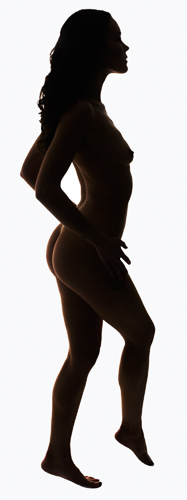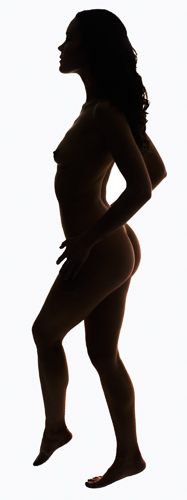
Scott Clifton Photography


Scott Clifton Photography

Today's video can be viewed (here) and gives an excellent treatment of this subject.
There are several "degrees of freedom" a portrait photographer has when deciding how to light a model. Firstly, as this video describes there is where on the ground the light is placed relative to the subject and the camera. In the video
you are asked to imagine an analogue clock face placed on the ground with the model located in the centre of the clock and the camera placed at 6 o'clock. The position of the light can then be specified in terms of the "time" on the clock.
So, 3 o'clock corresponds to the light being at right anngles to the camera/model axis, on the right hand side.
However, there are other degrees of freedom for the photographer to consider. One is the height of the light relative to the model. Conventional wisdom is that the light should be above the model, unless you're looking for a ghoulish look!
The video makes a brief mention of this degree of freedom. A third degree of freedom is the angle between the direction of gaze of the model and the camera/model axis. For most of the time the video assumes that the model is looking directly
at the camera. Other options are broad and short lighting. Broad lighting is achieved with face turned away from the light, and short lighting with the face turned towards the lighting.
In detail:
• The video identifies "hot" and "dark" zones, with the former stretching from 3 o'clock to 9 o'clock via 6 o'clock (ie the region in front of the model, and latter stretching behind the model from 9 o'clock,
through 12 o'clock back to 3 o'clock.
• The hot zone is where the main light for most portraits is placed. For example the position at 4:30 which is equivalent to a 45 degree angle to the camera/model axis, and the corresponding 7:30 position on the other side of the camera/model axis
are the classic locations for a well lit complimentaryportrait with some shadow on the other side of the face to give some depth to the image.
• The video recommends a location of 4 o'clock (and 8 o'clock) for conventional lighting. This is close to the 45 degree angle mentioned above. which would be 4:30 and 7:30. It's not made clear why 4 and
8 o'clock are recommnded rather than 4:30 and 7:30.
• The video describes how at the 3 o'clock and 9 o'clock positions the lighting is much more "moody" with "split lighting" where one side of the face is well lit and the other side is dark. It is
suggested that this would be good lighting for a male subject.
• The video describes how at the 2 o'clock and 10 o'clock positions light now falls more on the side of the body and face and hair. It is recommended that now the model should look to the side where the
light is located so that more light falls on the face. We are warned to be on the look out for some light falling on the nose.
• The video describes how at 1 o'clock and 11 o'clock the light becomes a "hair light".
• The video describes how at 12 o'clock the light can be reversed to light the background or be used as a hair light.
• The second dimension I mention above which involves the angle the light makes vertially is mentioned with regards to the 4 o'clock and 8 o'clock lighting position. The height of the light should be such
that the "catch light" (the reflection of the light source in the model's eye) should be at 2 o'clock in the eye so that the shadow on the face of the nose meets the line of the lip. If that doesn't it looks odd!
• The video then goes on to deal multiple light scenarios assuming that the first light is at 4 o'clock. This will be the main or "key light". It considers
another light at 6 o'clock: the 'fill light'. This will fill in some of the shadows created by the key light. This would be a good setup for a group photo.
• The video then considers the use of the second light as an "accent light". At the 2 o'clock position it will emphasis the right hand side of the model's body, head and hair.
• The video also comments on the accent light at 1 o'clock which provides good separation between model and the background.
• The video then carries on considering more two (and 3 etc) light combinations but the results are pretty predictable from a knowledge of the above. The video, rightly, cautions against deploying two or more lights
"in opposition", ie being placed
opposing each other across the subject/camera axis. Apparently, opposing lights are used in fashion photographs!